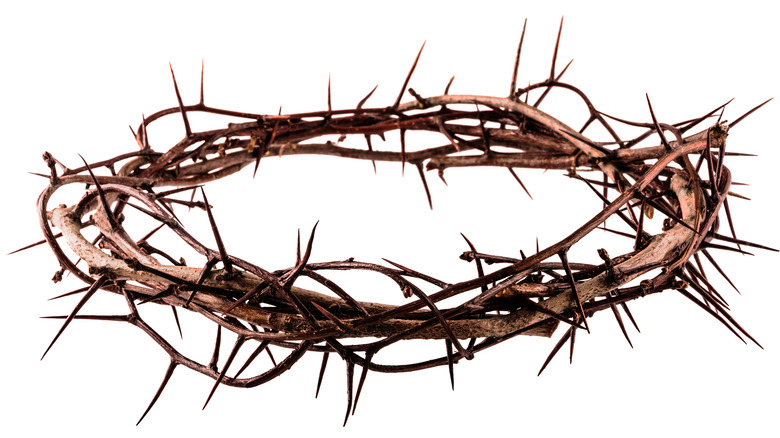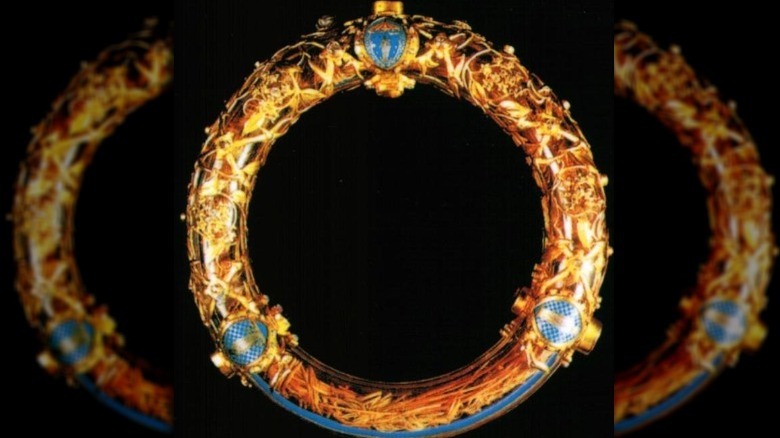Does Jesus' Crown Of Thorns Still Exist Today?
The wearing of a crown of thorns was one of the many torments endured by Jesus, according to Gospel accounts, placed there to mock him as "King of the Jews" (via Britannica). Many of the artifacts associated with Christ were allegedly preserved by his followers and, centuries later, discovered and sold or stolen, falling into the hands of Christians. The crown of thorns was among these, and for centuries these items were worshiped in Jerusalem before the former relic was eventually transferred to Constantinople, the capital of the Byzantine/Eastern Roman Empire (via News.com.au).
It remained there until western crusaders sacked the city, took over much of the Byzantines' territory, and temporarily created the Latin Empire. According to The Compass, as this new realm began to fracture, its emperor, Baldwin II, gave the crown to King Louis IX of France in the hopes of securing aid. As the Latin Empire ultimately fell and the Byzantine Empire was restored, the crown survived and has been in France ever since.
There is a crown of thorns currently in the Louvre, but may not be what many have claimed
Once in the possession of the French monarchy, the crown was moved to several churches and abbeys, settling in Notre Dame, where it stayed until 2019, when a massive fire engulfed the building. The crown (above) was among the objects inside that were rescued and is currently kept in the Louvre Museum (via CBS). While a silver lining in the tragedy given the object's verifiable history, its authenticity as the biblical crown remains in question. It was revered alongside supposed pieces of the true cross, yet documentation of these objects prior to the 400s A.D. is scarce.
It is possible that this crown was created after his crucifixion — something that would not be without precedent. In the centuries after Christ's death, many supposed relics surfaced, often with several simultaneous claimants, such as the lance used to pierce his side (which Britannica reports as supposedly existing in Italy, Austria, Armenia, and many other countries). That being said, they are still old in their own right, and while probably not genuine, have long histories and deep sentimental value attached to them, including the crown of thorns. If nothing else, they serve as physical representations of belief.

